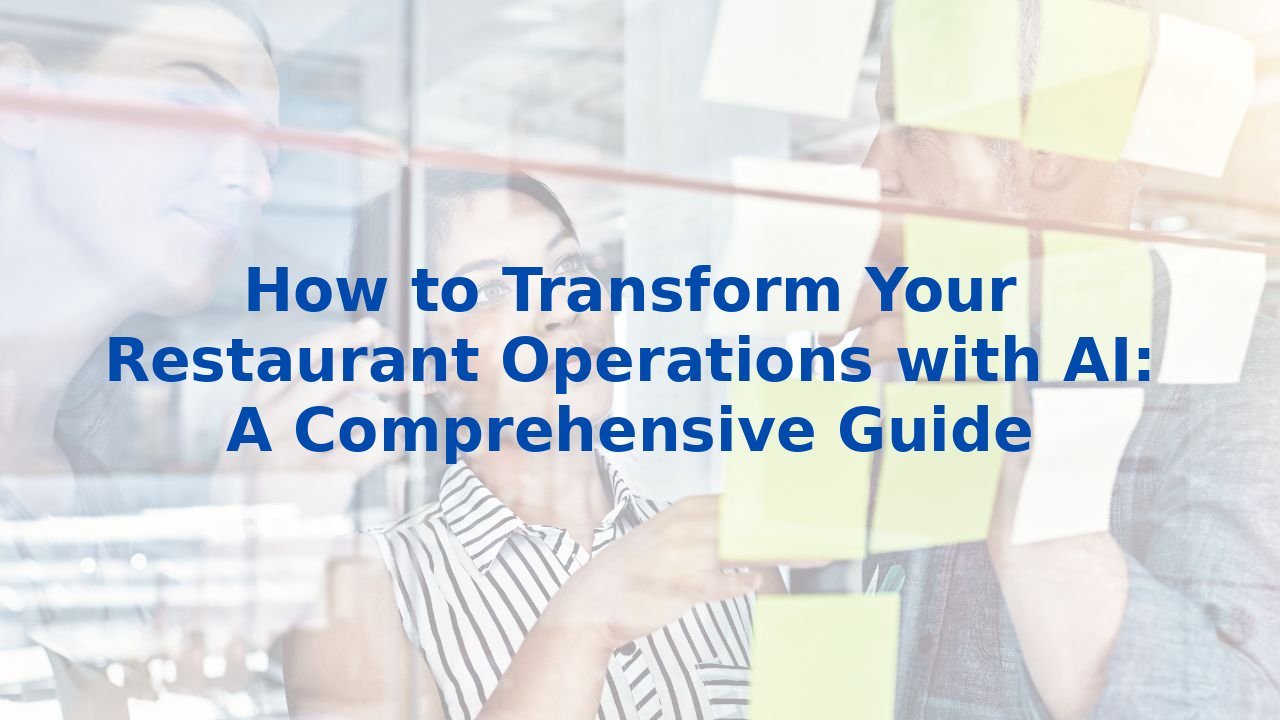How to Transform Your Restaurant Operations with AI: A Comprehensive Guide
Enhancing Restaurant Operations with AI: A Comprehensive Guide
Introduction
The restaurant industry is on the brink of a technological renaissance, driven by the power of Artificial Intelligence (AI). By seamlessly integrating AI into their business processes, restaurants can redefine their operational models while enhancing efficiency and delivering superior customer experiences. In this guide, we’ll explore how AI can refine various aspects of restaurant operations, from inventory management to customer service, and highlight why upskilling your employees is essential in this transformative journey.
Business Processes in the Restaurant Industry
1. Inventory Management
Traditionally, inventory management in restaurants has involved manual tracking of stock levels, resulting in inefficiencies and potential errors. This can lead to a tangled web of overstocked items, food waste, or running out of essential supplies during peak hours.
By leveraging AI, restaurants can employ predictive inventory management systems that automatically assess stock levels and forecast future demand based on historical data. For example, AI can analyze sales trends, seasonal patterns, and even local events to optimize purchasing decisions. This data-driven approach not only minimizes waste but also ensures that the right ingredients are available when needed.
2. Point of Sale (POS) Systems
POS systems are the nerve center of restaurant operations, responsible for tracking sales and managing transactions. Traditional systems, however, often lack advanced analytical capabilities that can provide valuable insights.
AI-enhanced POS systems redefine this aspect by offering real-time analytics that helps in making informed decisions. With AI, restaurants can gather data on customer preferences and behaviors, allowing for personalized upselling opportunities that improve sales and customer satisfaction. Imagine a system that automatically suggests menu items based on a customer’s past orders—this is the future that AI promises.
3. Customer Service
Customer service in the restaurant sector often requires human effort, leading to instances of delays and occasional miscommunication. Customers today expect swift, accurate responses, and this is where AI can step in.
Employing chatbots and virtual assistants, restaurants can manage common inquiries and reservation requests efficiently. By freeing up staff from answering repetitive questions, AI allows employees to focus on providing outstanding service, resulting in an overall enriched dining experience.
4. Kitchen Operations
In the kitchen, the manual tracking of orders can create bottlenecks and errors that affect service speed and food quality. However, integrating AI into kitchen operations can flag priorities and communicate special dietary needs directly through Kitchen Display Systems (KDS).
This automation not only streamlines communication but also enhances the precision of order preparation, significantly reducing the chances of mistakes and improving overall kitchen workflow.
Benefits of AI for Restaurant Operations
1. Efficiency and Automation
AI facilitates automation of mundane tasks, allowing staff to concentrate on higher-level responsibilities. This shift not only enhances operational efficiency but also empowers employees to focus on strategic initiatives and customer interactions.
2. Data Analytics
The beauty of AI lies in its ability to provide real-time analytics. Restaurants can make informed decisions based on up-to-the-minute data, contributing to a deeper understanding of sales trends and customer behaviors. This clarity leads to improved operational performance.
3. Personalization
Personalization drives customer loyalty, and AI helps achieve this by creating tailored experiences. From customized menu recommendations to targeted promotions, the ability to connect with customers on an individual level can significantly enhance their loyalty and satisfaction.
4. Cost Reduction
By optimizing inventory levels and minimizing food waste, AI translates into substantial cost savings. Improved efficiency equates to better margins, enabling restaurants to thrive even in competitive markets.
Training Employees for AI
While the power of AI is undeniable, its effectiveness is amplified when employees are trained in its application. Understanding AI capabilities is key—for instance, comprehending data analytics and machine learning allows team members to make the most of the systems in place.
Furthermore, training ensures operational efficiency as staff becomes adept at handling AI tools, reducing downtime and maximizing productivity. Customer service can also see a boost, as trained employees can manage inquiries seamlessly, enhancing the overall customer journey.
Finally, with the rapid pace of AI advancements, a well-equipped workforce is more adaptable to new technologies, fostering a culture of continuous improvement.
Conclusion
The integration of AI within restaurant operations is not merely a trend but a fundamental shift towards a more efficient and customer-centric model. By embracing these technologies and investing in employee training, restaurants can unlock new levels of performance—ensuring they not only survive but thrive in an increasingly competitive landscape.
Embracing AI in your restaurant isn’t just about adopting new tools; it's about revolutionizing how you operate and serve your customers.



